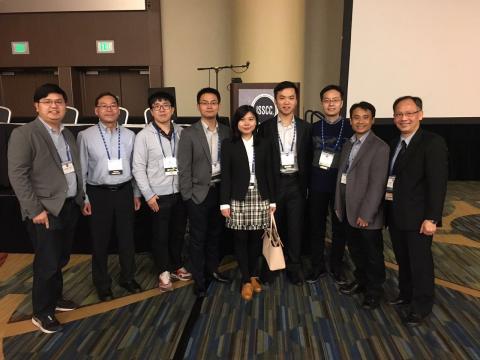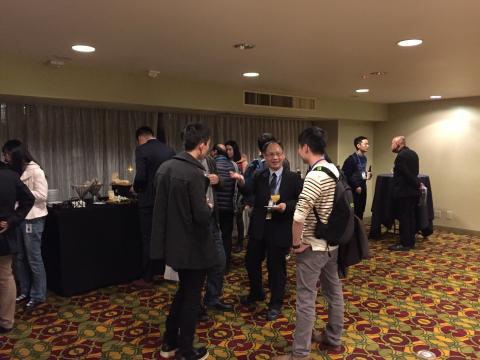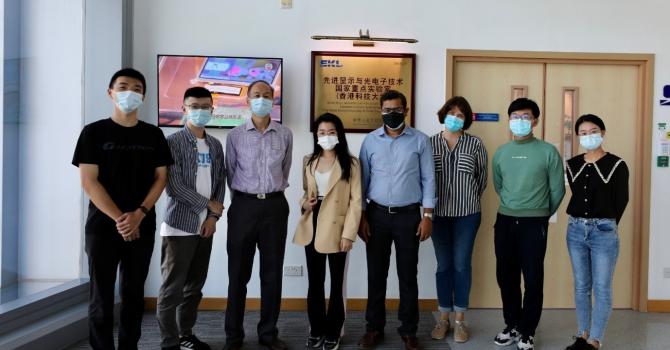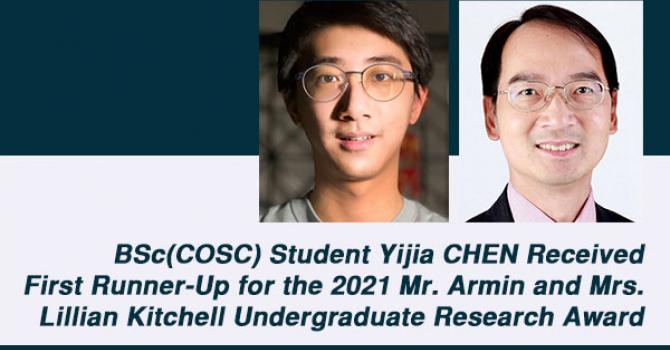IEEE International Solid-State Circuits Conference 2017
Four papers by students and professors of ECE, and two more papers in collaboration with other universities, were presented at the IEEE International Solid-State Circuits Conference (ISSCC), also known locally as the "Chip Olympiad", that was held on 5-9 February 2017 in San Francisco, USA. This is the best HKUST presentation record in this premier forum of solid-state circuits and systems-on-a-chip.
Prof. Wing-Hung Ki was also invited to present at one of the technical forums. He reviewed wireless power transfer techniques used in bio-medical implants and elaborated on the related research advancements at HKUST.
We also earned several student awards issued by the IEEE Solid-State Circuits Society. PhD candidates Junmin Jiang and Zhiqiang Huang won the Pre-Doctoral Achievement Award, while PhD candidate Yuan Gao attained the Student Travel Grant Award (STGA).
The School of Engineering and the ECE Department co-hosted the fifth annual Alumni and Friends Reception at ISSCC. This event provided an excellent chance for us to keep in touch with our alumni and friends working in the semiconductor and IC industry in the Bay Area. We also established new contacts with the local industry and discussed possible collaboration opportunities.
Additional information about the six papers:
The first paper is entitled "A 65nm Inverter-Based Low-Dropout Regulator with Rail-to-Rail Regulation and over -20dB PSR at 0.2V Lowest Supply Voltage" by Fan Yang and Prof. Philip Mok. This paper presents a novel analog circuit technique to build a low-dropout regulator with inverters which can produce better than -20dB PSR at an ultra-low supply voltage of 0.2V.
The second paper is entitled "An AC-Input Inductorless LED Driver for Visible-Light-Communication Applications with 8Mb/s Data-Rate and 6.4% Low-Frequency Flicker" by Yuan Gao, Lisong Li and Prof. Philip Mok. In this work, a direct AC-input LED driver is developed such that the harmful low-frequency-flicker is minimized to 6.4% while can achieve transmission data rate of 8Mbps in high-speed Visible Light Communication systems.
The third paper is entitled "A 2.4V 23.9dBm 35.7%-PAE -32.1dBc-ACLR LTE-20MHz Envelope-Shaping-and-Tracking System with a Multiloop-Controlled AC-Coupling Supply Modulator and a Mode-Switching PA" by Xun Liu, Heng Zhang, Min Zhao, Xuan Chen, Prof. Philip Mok and Prof. Howard Luong. The presented envelope-shaping-and-tracking system achieves high efficiency and linearity at supply voltage as low as 2.4V. The supply modulator achieves 5.7% higher efficiency than prior arts for LTE 20MHz 16-QAM signal.
The fourth paper is entitled "A 30MHz Hybrid Buck Converter with 36mV Droop and 125ns 1% Settling Time for 1.25A/2ns Load Transient" by Dr. Lin Cheng and Prof. Wing-Hung Ki. The converter employs a self-biased DDA-based Type-III compensator assisted by a fast hybrid scheme that achieve both overshoot and undershoot reduction during load transients.
The fifth paper is entitled "A Dual-Symmetrical-Output Switched-Capacitor Converter with Dynamic Power Cells and Minimized Cross Regulation for Application Processors in 28nm CMOS" by Junmin Jiang and Prof. Wing-Hung Ki, and in collaboration with researchers from the University of Macau. The fully integrated switched-capacitor power converter enhances power handling capability by dynamically reallocating capacitors.
The sixth paper is entitled "A 1.7mm2 Inductor-less Fully-Integrated Flipping-Capacitor Rectifier (FCR) for Piezoelectric Energy Harvesting with 483% Power Extraction Enhancement" by Prof. Wing-Hung Ki in collaboration with researchers from the University of Macau. The integrated system flips and charges the on-chip resonating capacitor to increase the effective conduction time and thus the harvested power.






